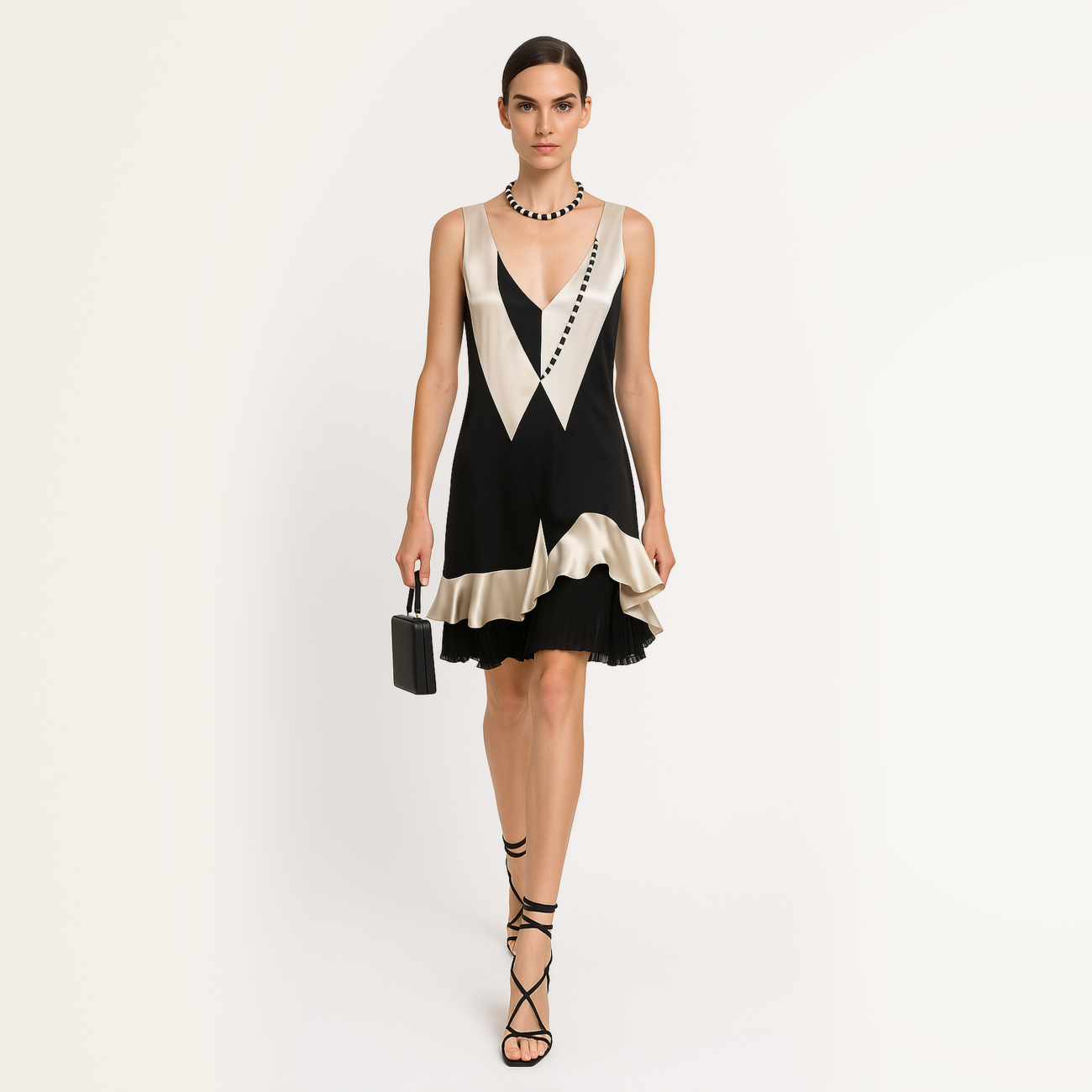Art-deco
Art Deco embodies the concept of refined luxury, elegance, and the optimism characteristic of the period between the two World Wars. This style merges tradition with the avant-garde, functionality with extravagance, and reflects a fascination with technological progress. Its philosophy centers on the ideal of modernity, expressed through bold geometry and intricate patterns—where every element carries both practical purpose and aesthetic appeal.
History
Art Deco emerged in the period between the two World Wars, as a response to the rapid changes sweeping across the globe. The history of this style is unique—born from the collision of modernism and past elegance, technology and ancient traditions.
In the 1920s, Europe and America were experiencing an era of swift transformation and innovation. With the end of World War I, there was a hunger for radically new ideas and artistic forms that stood apart from everything that had come before. Amidst the “Roaring Twenties,” Art Deco became the style that expressed optimism, boldness, and a desire for progress.
Art Deco was influenced by various early 20th-century artistic movements—Cubism, Modernism, Constructivism, and Futurism—as well as a fascination with exotic cultures. France, where the style first gained recognition, was then the cultural hub of Europe. In 1925, the Exposition Internationale des Arts Décoratifs et Industriels Modernes was held in Paris. This international exhibition not only marked the global debut of the style but also gave Art Deco its name.
A defining feature of Art Deco is its eclectic fusion of the avant-garde and the classical. Designers drew inspiration from ancient civilizations—Egypt, Greece, Rome, and Mesoamerica. The discovery of Tutankhamun’s tomb in 1922, which captivated the world, had a profound influence on fashion, architecture, and design. Egyptian motifs—pyramids, sphinxes, suns, and hieroglyphics—began to appear in interior design and clothing. Jewelry of the era featured temple relief–inspired forms, stylized deities, and animal figures.
With the advance of technology, Art Deco readily integrated elements of the industrial age. Materials like metal, glass, plastic, and concrete became symbols of modernity and were widely adopted, especially in architecture. A striking example is the Chrysler Building in New York, completed in 1930. Its sharp geometric forms, stainless steel accents, and iconic spire made it a global symbol of Art Deco architecture.
In fashion, Art Deco adapted to the lives of modern women, who were increasingly entering the workforce and public life. Designs combined simplicity and functionality with touches of luxury and sophistication, creating silhouettes that symbolized freedom and confidence.
By the late 1930s, the world was once again entering a dark period. As World War II approached, public sentiment shifted, and the extravagant nature of Art Deco began to feel out of step with the times. The style gave way to more restrained movements like Functionalism and Minimalism, which aligned with the growing need for practicality.
Despite this decline, the legacy of Art Deco endured. Its influence remained visible in architecture, jewelry, fashion, and film. Over time, Art Deco regained popularity, becoming a symbol of retro chic and urban elegance, celebrated for its timeless glamour and sophisticated edge.
Signature elements of the style
Color palette
Art Deco is defined by a rich and dramatic palette. Dominant colors include black, gold, silver, emerald green, sapphire blue, and burgundy, often used in high-contrast combinations like black and white. Metallic tones play a significant role, emphasizing the style’s opulence and glamour.
Prints
Geometric patterns—zigzags, circles, triangles, and bold linear motifs—are central to the aesthetic. Stylized natural elements such as flowers, leaves, and suns appear, but are presented in a restrained, graphic manner. The style also incorporates Eastern influences, animal prints, and exotic ornaments, including Ancient Egyptian, Greco-Roman, Aztec, and Mayan-inspired designs.
Textures
Art Deco embraces luxurious materials such as velvet, satin, silk, organza, and metallic threads. Rich embellishments include fringe, beading, pearls, feathers, and fur, adding texture and movement to garments and accessories.
Cuts & silhouette
Silhouettes are typically elongated and straight, often featuring bias cuts that enhance fluidity and elegance. Art Deco dresses commonly have a dropped waistline, asymmetrical necklines, defined shoulders, and a range of lengths—from short, flapper-style dresses to floor-length gowns with dramatic trains.
Wardrobe essentials
- Dresses: Charleston dresses, Paquin-style gowns, and drop-waist dresses are iconic to the Art Deco era. They are often adorned with fringe, embroidery, and metallic details, emphasizing the theatrical flair of the style.
- Blazers: Jackets with strong, structured shoulders, sometimes featuring fur trims or geometric embroidery, add a touch of bold sophistication.
- Jewelry: Gold and silver pieces set with gemstones, featuring asymmetrical and graphic shapes, cuff bracelets, bold earrings, and statement necklaces. Costume jewelry in pearl or oversized geometric designs is also key.
- Headwear: Cloche hats, turbans, and headpieces embellished with feathers or gemstones bring charm and drama to the look.
- Footwear: Strappy heels with geometric details, and patent leather or metallic ankle boots, complete the ensemble with a refined, glamorous touch.
Substyles
Email: support@belt-app.com

















